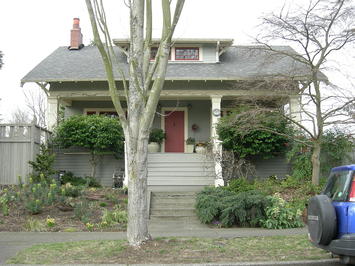
Another day, another story about how evil single-family zoning makes housing expensive. This one is from Seattle, whose urban-growth boundary was drawn more than 30 years ago and, as far as I know, has never been changed.
This article starts from the premise that someone said that families want single-family homes so turning single-family neighborhoods into multifamily housing is “anti-family.” The writer’s response is that most of the city’s new residents are single, not families. Of course that’s true: thanks to the urban-growth boundary, most families with children can’t afford to live in the city and so choose to live in the suburbs.
Another article, this one from Los Angeles, blames affordability problems on downzoning. Only the writer doesn’t mean downzoning of rural land to prevent urban development but downzoning that took place forty years ago that took existing neighborhoods of single-family homes that had been zoned for higher densities and rezoned them for the single-family uses that were there.
None of these writers ask what kind of housing people want. They assume that people will accept the housing that is available, and if planners create an artificial land shortage, that means more multifamily housing.
When smart-growth planners do ask what people want, they load the questions and ask something like: “Would you rather live in a house with a large yard and drive everywhere or live in a house with a tiny yard and walk to shops and transit?” A more-accurate question would be: “Would you rather pay $200,000 for a 2,200-square foot home on a large lot that is easy driving distance from shops or pay $400,000 for an 1,100-square-foot condo that is easy walking distance from shops and transit or pay $600,000 for a 1,500-square-foot house on a tiny lot that is within walking distance to transit but not many shops?”
Even Millennials don’t aspire to live their lives in dense cities. At least two-thirds say they prefer to live in suburbs.
Answers to survey questions are less important than the choices people actually make, which is what economists call “revealed behavior.” And the vast majority of new households, regardless of age, are choosing suburb-like housing areas, not dense inner cities.
For reasons that have never made sense to the Antiplanner, urban planners want to change those choices. So they make a big deal of single-family zoning even though housing prices are determined more by what happens in undeveloped areas on the urban fringe than by existing developments.
The last time I brought up this subject, I wrote that “no city in the world has ever become more affordable by growing denser.” Someone pointed out a Wall Street Journal article saying that New York City has become more affordable thanks to a multifamily housing boom. American Community Survey data show that the ratio median home value to median family income in Manhattan declined from 10.6 in 2010 to 10.1 in 2016, while in Brooklyn it declined from 12.1 to 10.8 in the same years. That seems to support this idea.
As the Antiplanner has previously noted, however, growth management not only makes housing more expensive, it makes prices more volatile. So we can expect to see some small fluctuations in affordability over time. However, anywhere with a price-to-income ratio greater than 10 is far from affordable — I draw the line at a ratio of 3. To be accurate, I should say that “once made unaffordable due to growth management, no city in the world has ever become affordable by growing denser.”
This piece first appeared on The Antiplanner.
Randal O’Toole is a senior fellow with the Cato Institute specializing in land use and transportation policy. He has written several books demonstrating the futility of government planning. Prior to working for Cato, he taught environmental economics at Yale, UC Berkeley, and Utah State University.
Photo: Joe Mabel [GFDL or CC-BY-SA-3.0], via Wikimedia Commons












